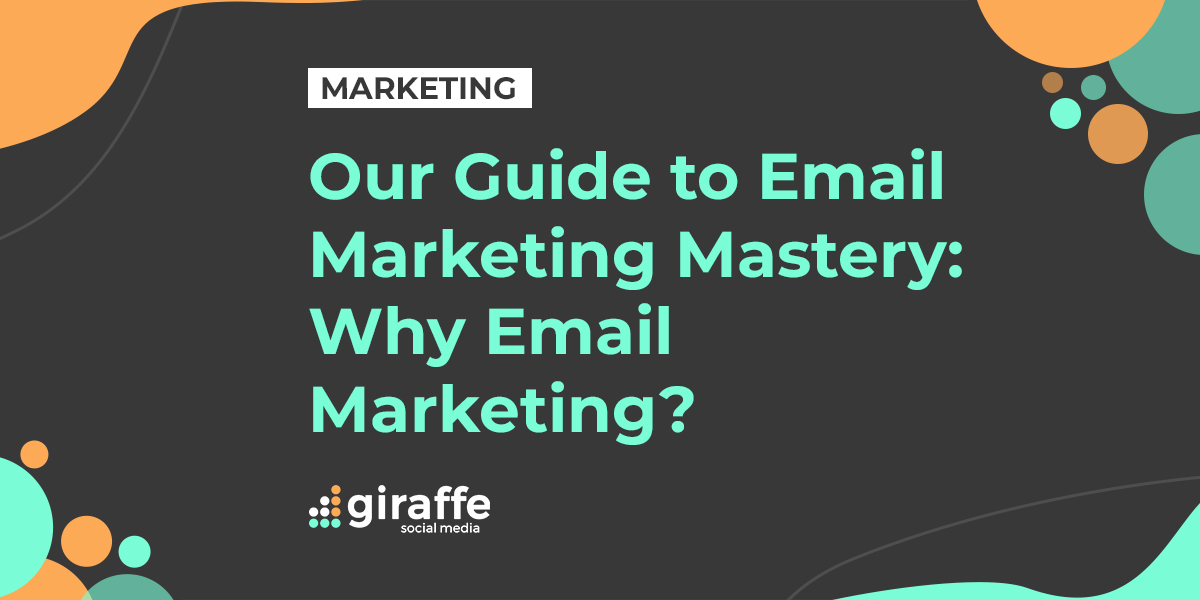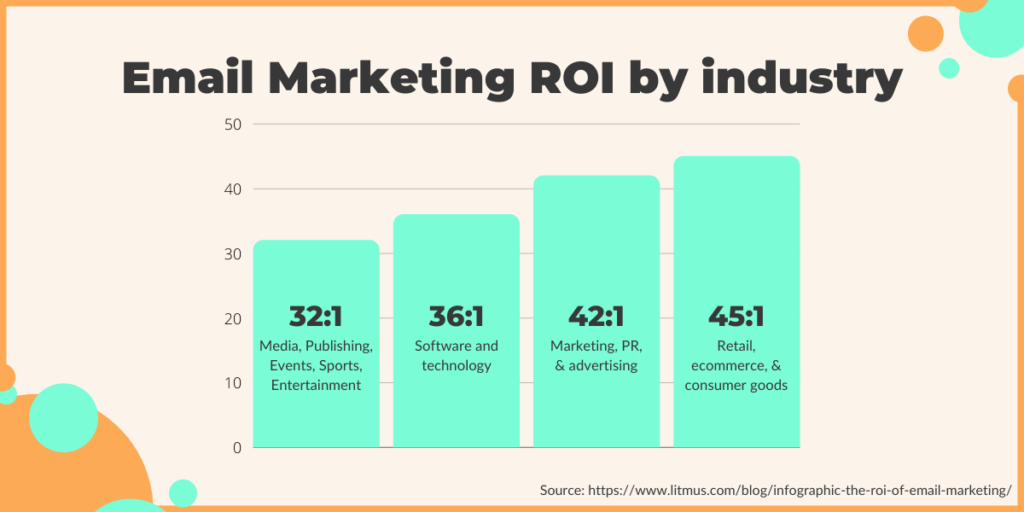Why Email Marketing?
While social networks are oversaturated with messages, we subconsciously consider our email inbox as a place of solace, where most of the messages we see are ones that we’ve already given the thumbs up.
Businesses of all sizes can benefit from email marketing as part of their digital marketing strategy, if suitable for their audience/consumer base. But to master email marketing and achieve your goals, campaigns need to venture beyond the point of building, delivering, repeat. That’s why we created our guide to email marketing mastery – to give you a better grasp of the finer details and help you tap into your business’s potential…
In this series of articles, we’re looking into why you should consider adopting an email marketing strategy, how to properly build a database of recipients, how to build a killer email, and how to analyse your results to constantly improve. This first article gives you an idea of what you should do before you begin and focuses on answering the question: why email marketing?
What is email marketing?
Before we can ask why, we need to know what. Email marketing is a form of digital marketing whereby businesses use email to promote their business, educate their audience, and promote deals on products/services.
You’ve probably seen hundreds, if not thousands, of marketing emails in your inbox from various brands, with content such as discounts/sales and business updates. Types of email marketing campaigns include welcome emails, newsletters (including promotions), transactional emails, and behavioural emails (based on user behaviour).
Is email marketing still relevant?
While it might feel like an old form of digital marketing when compared to the modern branches of social media and influencer marketing, email marketing is not to be overlooked.
Jimmy Rodela (CMS, Marketing, and E-Commerce Expert) suggests 7 key reasons why email marketing is still important:
- “Email generates better results than most marketing channels,
- Emails help with customer engagement and retention,
- Emails compel your audience to take action,
- Emails improve brand awareness,
- Emails allow you to personalise your content,
- Emails can drive traffic to your website,
- Emails integrate with your other marketing channels seamlessly.”
Email marketing helps businesses drive brand awareness, conversions, customer engagement, lead generation, and more. You want your brand to be the first thing in your customers’ minds when they’re looking to buy a product/use a service in your industry, as well as the first to hear about new deals, sales, and discounts.
Email marketing generally sees a higher ROI (return on investment) than other marketing channels, with an average of $36 return for every $1 spent. Retail, eCommerce, and consumer goods businesses see the highest average ROI at 45:1.
Before you begin…
Successful email marketing campaigns can do wonders for your business – getting started with building a strategy and recipient list is the first hurdle. This email marketing mastery guide will help you on your way to email marketing success, but before you get going with email marketing, there are a few decisions that you need to make and some areas to be aware of:
Legal considerations
UK law regarding direct marketing states that you’re “only allowed to send marketing emails to individual customers if they’ve given you permission.” Your email marketing must include who you are, that you’re selling something, and what promotions are included, and any conditions. If you plan to buy/rent a mailing list, you must check with the supplier that you have the right to use the list for email marketing purposes.
The UK Guide to the General Data Protection Regulation (GDPR) “gives individuals the right to object to the processing of their personal data in certain circumstances” and the “absolute right to stop their data [from] being used for direct marketing.” Every marketing email you send must include the ability to opt-out/unsubscribe from your marketing emails. Customers have a legal right to stop their information from being used for direct marketing purposes. Those who unsubscribe from your emails must also be notified that you have added them to a list of individuals who do not want to be emailed.
Deciding on an email provider
Each email provider offers a range of services and pricing models, each of which will have different appeals depending on the frequency of your emails, the size of your database, and your marketing goals.
Reigning favourite, Mailchimp, offers different subscription levels, including a free option. For a pricing reference, Mailchimp offers the following pricing tiers:
- Free users have access to a Marketing CRM, the Creative Assistant tool, a website builder, a Mailchimp domain, forms & landing pages, and more,
- From £7.32 / month, the Essentials package adds email templates, custom branding, A/B testing, and more,
- From £10.98 / month, the Standard package adds send time optimisation, behavioural targeting, custom templates, and more,
- From £219.02 / month, the Premium package offers additional benefits such as advanced segmentation, comparative reporting, multivariate testing, and more.
Alternatives to Mailchimp include Hubspot, Moosend, and MailerLite. Whichever platform you decide to use, make sure you do your research beforehand to weigh up your options.
Competitor analysis
Before you get going, you want to see what others in your industry are doing. The simplest way to conduct competitor and industry analysis is by signing up for five or six different competitor email marketing lists. Remember to use a generic email address rather than your business email, “so you’re not broadcasting to the competitor that you’re “spying” on them – although they are more likely than not doing the same – and so that you can organize the research you’re doing into one separate, clean inbox.”
When you receive your competitors’ emails, compile them into a folder and analyse each email. Areas to look out for and analyse include: send dates/times, design, structure, content, keywords, subject line, call-to-action (CTA), frequency, and more.
Then, conduct a SWOT analysis (Strengths, Weaknesses, Opportunities, and Threats) for each competitor. This will help you “draw actionable conclusions” from your research and inform your email marketing strategy going forward. It’s also worth looking at your competitors’ social media channels and websites to see how (and when) they promote their email marketing to encourage sign-ups.
That’s all for Part 1 of our Guide to Email Marketing Mastery. Check out the next three parts to learn more about email marketing:
- Part 2 – Building Your Recipients,
- Part 3 – Constructing Your Email,
- Part 4 – Analysing Your Email Marketing Campaign.
Editor’s note: This article was last edited in 2019 and has been updated for accuracy and relevance in October 2021.







